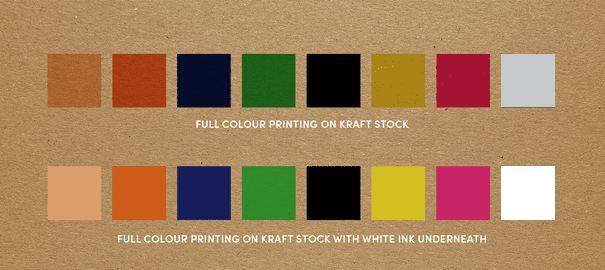Search
START TYPING AND PRESS ENTER TO SEARCH
Menu
Natural Kraft, derived from wood pulping, is a popular choice for packaging due to its strength and versatility. Its eco-friendly properties and varied specifications make it a standout alternative to other materials. Adaptable to diverse packaging needs, Natural Kraft comes in three main variants, each tailored to meet specific requirements.
Kraft paper’s natural brown color results from the wood pulping process. To achieve a white color, the brown paper is bleached with chemicals, which may slightly impact its strength. For customized colors, dyes are added, often after bleaching, to create vibrant shades.


Natural Kraft, a recyclable material, is widely favored for its numerous benefits, making it an excellent packaging choice for industrial and personal use. Its key characteristics include:
Sustainable brown paperboard’s strength and quality depend on its thickness and layers, which vary with different gram weights. Higher gram weights result in thicker Kraft paperboard.
The material’s weight and thickness affect printing efficiency and quality, which also differ based on paper types, such as brown (unbleached), white (bleached), or corrugated Kraft paper.

Physical properties, such as dust, stains, holes, creases, cracks, light transmission, fiber clumps, and corner neatness, affect Kraft paperboard quality. Chemical properties, including absorption, optical characteristics, and printing performance, influence the quality of printing outcomes.
The weight and thickness of Kraft paperboard are measured in grams per square meter (GSM) and evaluated through three key factors:
| Basestock Properties (Units) | Nominal Basis Weight (GSM) | Caliper (Inches) | Thickness (Microns) | Commonly Used For |
|---|---|---|---|---|
| 12 pt | 210 gsm | 0.012″ | 220 μ | Bags |
| 14 pt | 250 gsm | 0.014″ | 250 μ | Takeout Boxes, Cups |
| 16 pt | 300 gsm | 0.016″ | 320 μ | Heavy Duty Bags, Takeout Box |
| 18 pt | 350 gsm | 0.018″ | 360 μ | All Box Packaging |
| 24 pt | 420 gsm | 0.024″ | 440 μ | Heavy Duty Boxes |
| 28 pt | 500 gsm | 0.028″ | 500 μ | Very Heavy Duty Boxes |
To fulfill your Brand Packaging Needs, Packaging Shelter is providing its premium custom boxes and packaging designing services within the USA and Overseas since 2021.
We own a socially responsible company that provides economical priced printing and designing services to our valued clientele for numerous years.
Dealing Currency: UNITED STATES (USD)
@All Rights Reserved | ©2023
WhatsApp us